Welcome to our complete guide to creating a beautiful and productive flower garden. Whether you’re a beginner or just looking to refresh your gardening skills, this guide will provide the information you need to design and maintain a garden that will envy your neighborhood. This guide will give you all the information you need to start creating your flower garden.
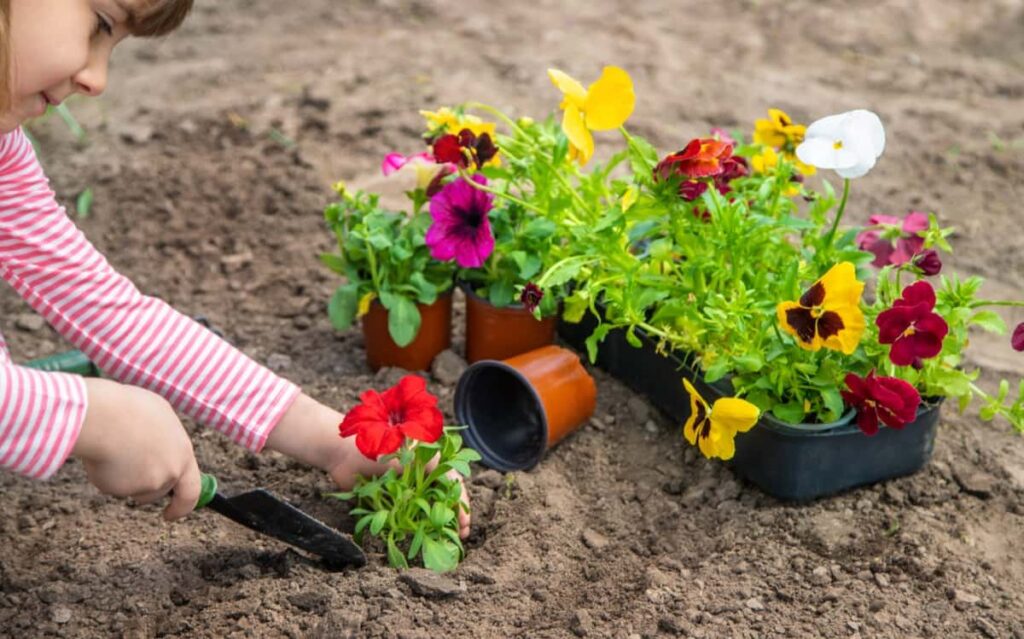
From selecting the right plants to choosing the perfect location and layout, we’ll cover everything you need to know to make your flower garden beautiful and productive. With our step-by-step instructions and helpful tips, you’ll be able to create a stunning flower garden that is both beautiful and productive. With a bit of planning and care, you can create a garden that will bloom with vibrant colors and provide you with fresh flowers all season long. So let’s get started on creating your own beautiful and productive flower garden.
How to create productive flower garden
What is a garden?
A garden is an area of land, often near a home or other building, used to cultivate plants, flowers, and other forms of vegetation. Gardens can come in many sizes and styles, from small window boxes to large, sprawling estates. They can be used for various purposes, including food, beauty, and recreation.
Many enjoy gardening as a hobby and find it to be a relaxing and rewarding activity. Some gardeners focus on growing fruits and vegetables, while others focus on ornamental plants and flowers. There are many types of gardening, including container gardening, raised bed gardening, and traditional in-ground gardening. The design and maintenance of gardens can be very simple or quite complex.
In case you missed it: Drip Fertigation in Flower Crops: A Practical Guide for Floriculture Farmers
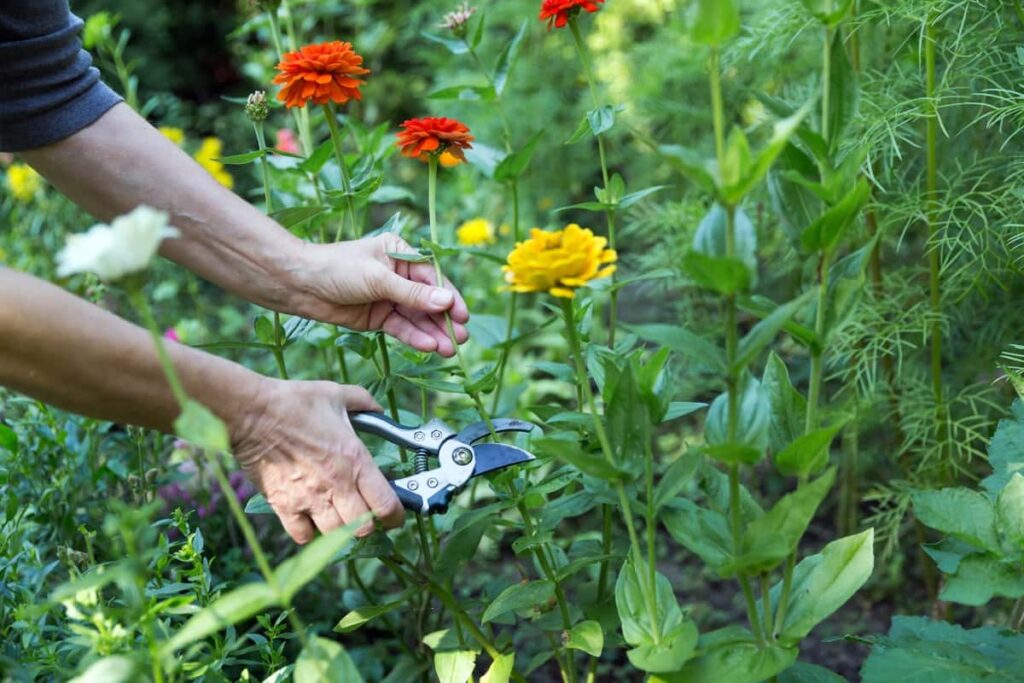
Selecting the right plants for the garden
- Consider your area’s climate and growing conditions, and choose plants well-suited.
- Consider the different amounts of sunlight the area receives and choose plants that will thrive in the amount of light available.
- Think about the overall design and aesthetic of the Garden, and choose plants that will complement and enhance that design.
- Consider the maintenance required for the plants you are considering, and choose those that are easy to care for and maintain.
Some examples of easy-to-grow and beautiful flowers used in a flower garden include daisies, zinnias, marigolds, petunias, and sunflowers.
Choosing the perfect location and layout
- Sunlight: Flowers need plenty of sunlight to thrive, so choosing a location that gets direct sunlight daily is important. If your Garden is in a shaded area, consider planting shade-loving flowers such as hostas, ferns, and impatiens.
- Soil: The soil’s quality can greatly affect your flower garden’s success. Test the soil to determine its pH level and nutrient content, and amend it accordingly. If the soil is poor, consider adding compost or other organic matter to improve it.
- Drainage: Good drainage is essential for a flower garden. Avoid low-lying areas that may become waterlogged after heavy rain. Consider building raised beds to improve drainage if your soil is heavy clay.
- Accessibility: Choose a location that is easy to access for watering, weeding, and other maintenance tasks. It’s also important to choose a location visible from your home or outdoor living areas to enjoy your Garden’s beauty.
- Layout: Consider the size and Shape of your Garden when planning the layout. Create a good focal point in the center of the Garden, and use tall flowers to create a backdrop. Plant flowers of different heights and colors to create a visually exciting and dynamic garden.
- Maintenance: Choose flowers that are low maintenance and easy to care for. It will save you time and effort in the long run. Consider planting perennials that come back year after year rather than annuals that need to be replanted yearly.
In case you missed it: Easy Homemade Fertilizer Recipes: Natural and Organic for Houseplants, Flowers, and Garden Plants
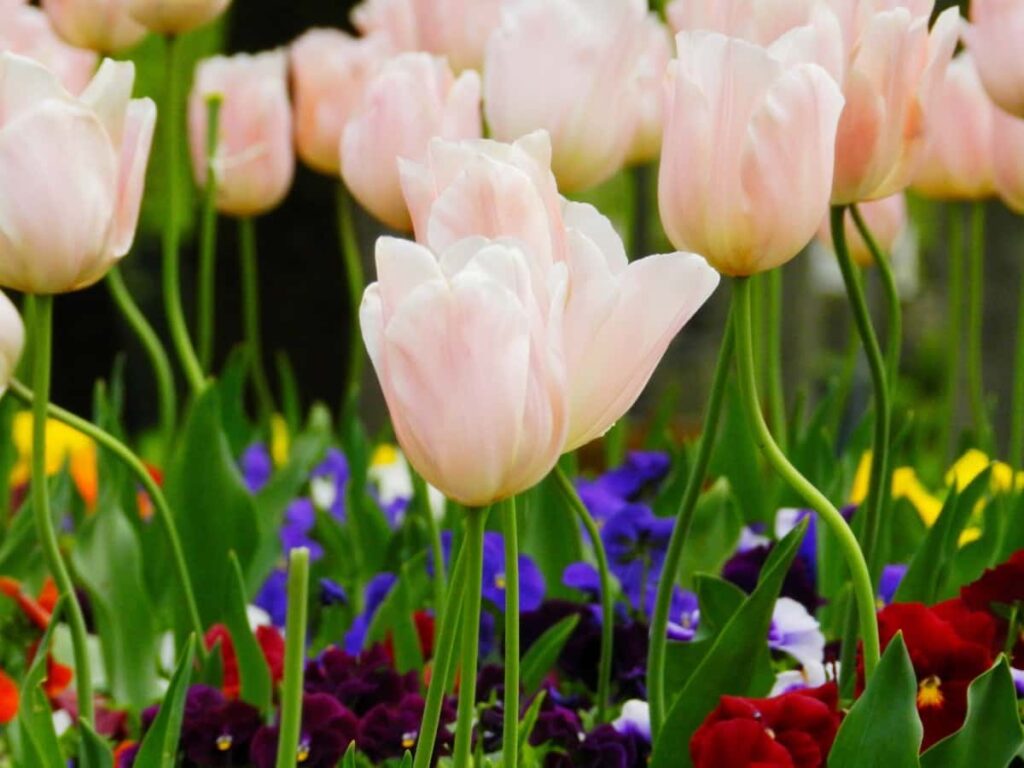
Additionally, pests like deer or groundhogs can also be a concern, so choosing plants that they are less likely to eat can help protect your Garden. It’s also important to find plants that thrive in your hardiness zone and to be aware of the difference between annuals, perennials, and biennials. The sunlight in your Garden should also be considered when selecting plants, as some plants prefer more sun while others prefer shade. To get inspiration, you can also observe and ask for tips from your neighbors with a beautiful gardens.
How to create a beautiful flower garden
Creating a beautiful garden space requires careful planning and the right skills to maintain it through the season. The best time to start planning and cultivating a flower garden is when the opening blooms appear in spring. While it may seem challenging, it can be made easier by following simple steps to curate the green space of your dreams.
Creating shape
To create a beautiful flower garden, give your flowers space by using a flower bed at least five feet wide. You can add large flowering shrubs, such as hydrangeas, to your Garden and other flowering plants. It creates a layered and diverse flower patch that adds structure and improves the Garden’s overall appearance.
To maintain a green garden
while incorporating flower plants, consider using landscape designs that do not require removing a single strip from the existing Garden. Adding flowers in pots and placing them in strategic locations, such as sideways or in circles in the middle of the Garden, can enhance the beauty of the Garden without causing much hassle. This way, the green effect of the Garden will make the flowers stand out and create a simple yet beautiful flower garden.
In case you missed it: Terrace Gardening ideas for Home in India: For Vegetables, Fruits, Flowers, and Herbs
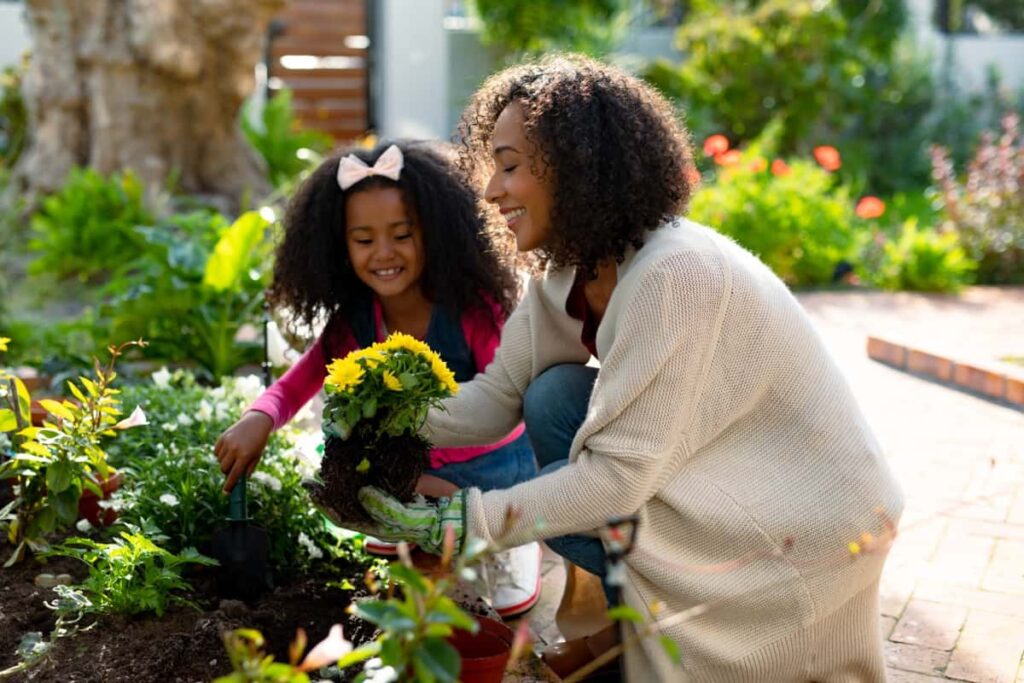
For a simple color scheme
in your Garden, choose three primary colors and stick to variations and shades of those colors when selecting plants and flowers. Using too many colors can make the Garden look messy and complex. White and green are considered neutral colors in any garden, so choose colors that complement them.
Choose a variety of plant heights
to create a lively and vibrant flower garden. It will add depth and interest to the Garden, even if small. Tall plants should be placed in the middle or back, while short plants should be placed near the edge to create a cascading look. Ask your florist or other gardeners for advice on the best flower plants to use according to height.
Shape and placement of the beds
Creating natural-looking beds along the contours of the yard or using gentle curves can give a unique and pleasing aesthetic. Additionally, consider how the outdoor space will be used and place flowers in full view of areas such as patios while keeping them out of high-traffic areas. Garden fences can also protect the flowers and allow them to flourish. Lastly, pay attention to the amount of sunlight the different flowers need and plan accordingly to ensure the new Garden is healthy.
In case you missed it: Top 4 Jasmine Flowering Plants for Fragrance: How to Grow, Care, and Make Bushy for More Blooms
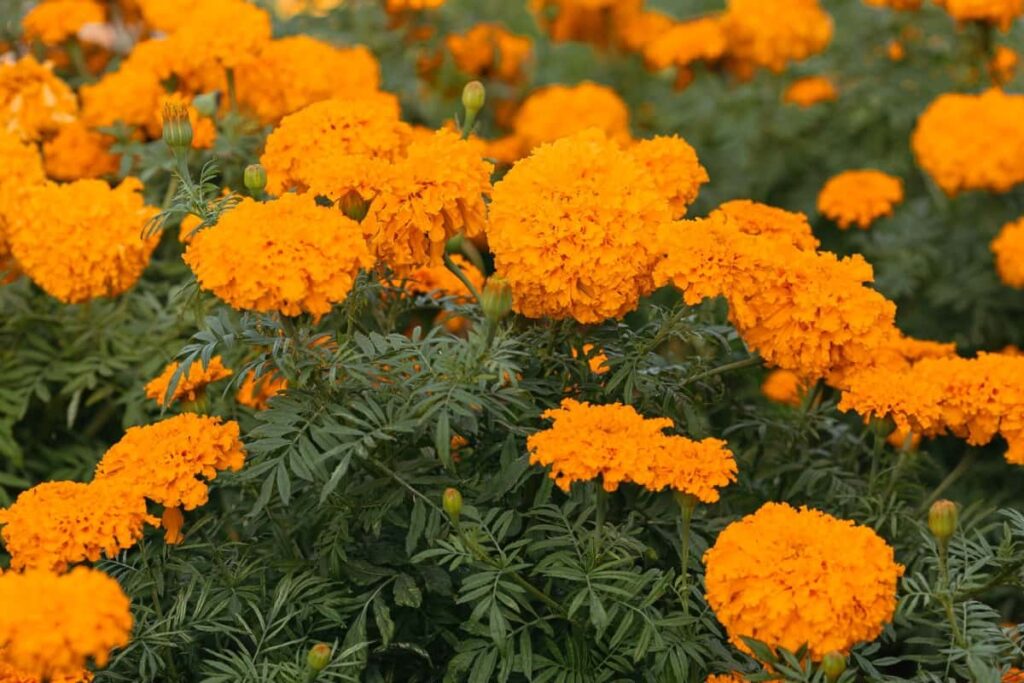
Beneficial pollinators
Pollinators are essential for a healthy growing space in every Garden. As a result, by planting flowering plants that are good food sources for pollinators in your backyard flower garden, you can welcome your pollinators to visit. Choose flower kinds that provide pollinators with food all season. In exchange, pollinators assist flowers in reproducing by spreading pollen from flower to flower.
Aware of annuals, perennials, and biennials for garden
Annuals are plants that complete life cycle in one growing season. They germinate, grow, flower, set seed, and die in one year or less. Examples of annuals include marigolds, zinnias, and sunflowers. Perennials are plants that live for more years and typically die back to the ground each year but reemerge from roots, rhizomes, or bulbs the following spring.
Examples of perennials include daisies, black-eyed susans, and daylilies. Biennials are plants that take entirely two years of their life cycle. They typically spend the first year growing leaves and roots and then flower and set seed in the second year before dying. Examples of biennials include foxglove and hollyhock.
Flower gardening ideas for creating a beautiful landscape
When designing a flower garden, it’s important to consider factors such as the plants that will grow best in your area, the colors and blooms of those plants, and any special care they might need. The style of your Garden should reflect your personal preferences and the architectural style of your home.
The Shape and size of the Garden should also be determined, and plants should be selected based on factors such as focal points, flower sizes, year-round interest, bloom time, and color combinations. The mature size of the plants should also be considered to ensure they have enough room to grow witessentialding their neighbors. It’s also important to select plants with staggered bloom times for year-round interest. Finally, selecting complementary flowers and foliage and relying on repetition in the garden design is essential.
Ways to make your garden more productive
There are various ways to make your Garden more productive, whether with a small windowsill or a large backyard. Some options include growing cut flowers, fresh herbs, or a mini farm. Techniques include:
- Starting new plants with cuttings.
- Growing vegetables in containers.
- Setting up a rainwater harvesting system.
Healthy soil
It is essential for a productive garden. Plants grown in fertile soil rich in nutrients and can retain water will be more productive and require less maintenance. To improve soil health, use fresh potting soil and add organic compost or other amendments to boost nutrient levels. Avoid synthetic fertilizers and pesticides, as they can harm beneficial soil organisms.
In case you missed it: Seed Germination Chart in India: Duration and Temperature for Fruits, Vegetables, Flowers, and Herbs
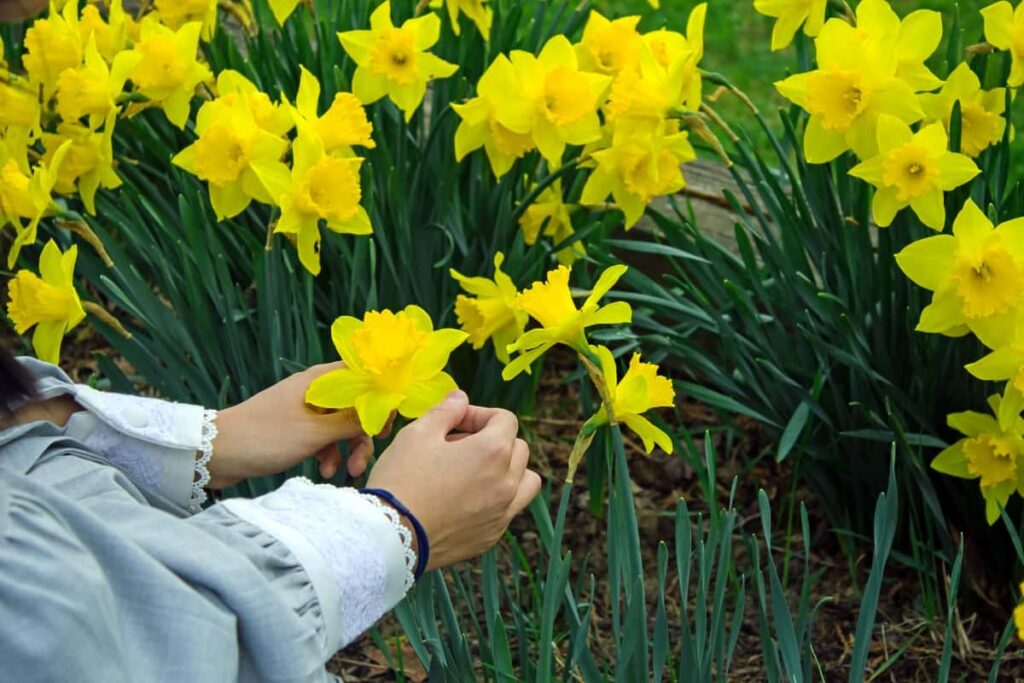
An alternative option is to try no-dig gardening by layering carbon-rich materials like twigs and dried leaves and nitrogen-rich materials like plant and grass clippings with cardboard. Allow the mixture to rest for 4 to 6 months, allowing worms and soil microbes to break down the layers and turn them into nutrient-rich topsoil.
Choosing the appropriate plants for your location
It is crucial for creating a productive garden. Consider your Garden’s climate zone and the sun exposure different beds receive. By selecting plants that naturally thrive in these conditions, you will have more flowers, a better fruit set, and healthy vegetables.
Growing a kitchen garden
It is a way to make your Garden more productive. Even if you only have room for a few pots on a windowsill, you can still grow something edible. For limited planting space, choose highly productive crops such as cut-and-come-again lettuces, cherry tomatoes, green beans, herbs, or radishes, which can be planted tightly and grow quickly to maturity. Plants like sweet corn, however, are less productive for small-space kitchen gardens as they only produce two to three ears per plant.
Growing traditional turf
Replacing traditional turf with plantings that benefit native pollinators, birds, and other wildlife or produce fruits and vegetables is a great way to increase your garden’s productivity. If you don’t need your lawn, consider this option, as it is often the least productive area of a typical residential garden and requires a lot of work.
Rainwater Harvesting for Gardening Collecting rainwater using a rain barrel placed beneath a downspout is an efficient way to utilize your roof. A 1-inch rainfall. This stored water can keep a kitchen garden or potted containers watered during drier months. However, before purchasing or installing a rain barrel, check local laws, as some states restrict rainwater harvesting.
Growing new plants from existing ones
It is a cost-effective way to expand your Garden. Geraniums and chrysanthemums are easy to grow from stem cuttings. At the same time, other plants, like the iris, can be divided and replanted after a few years. Saving the seeds of beans, squash or tomatoes can also be used to plant the following season.
Raised beds can be an excellent solution for poor soil or drainage issues, as they can be filled with a mixture of fully decomposed compost, native topsoil, and added grit to help drainage. Building a cutting garden is also a great way to have bouquets in your home while supporting pollinators in your Garden. Planting nectar- and pollinators flowering plants, significantly those native to your area, can help support essential pollinator populations.
Garden waste
It can also be used to create a compost bin or a worm box. Compost can be spread on top of garden beds to return nutrients to the soil, and worm droppings can be added back to the Garden.
In case you missed it: How to Grow Columbine Flowers: A Guide to Propagation, Planting, and Care.
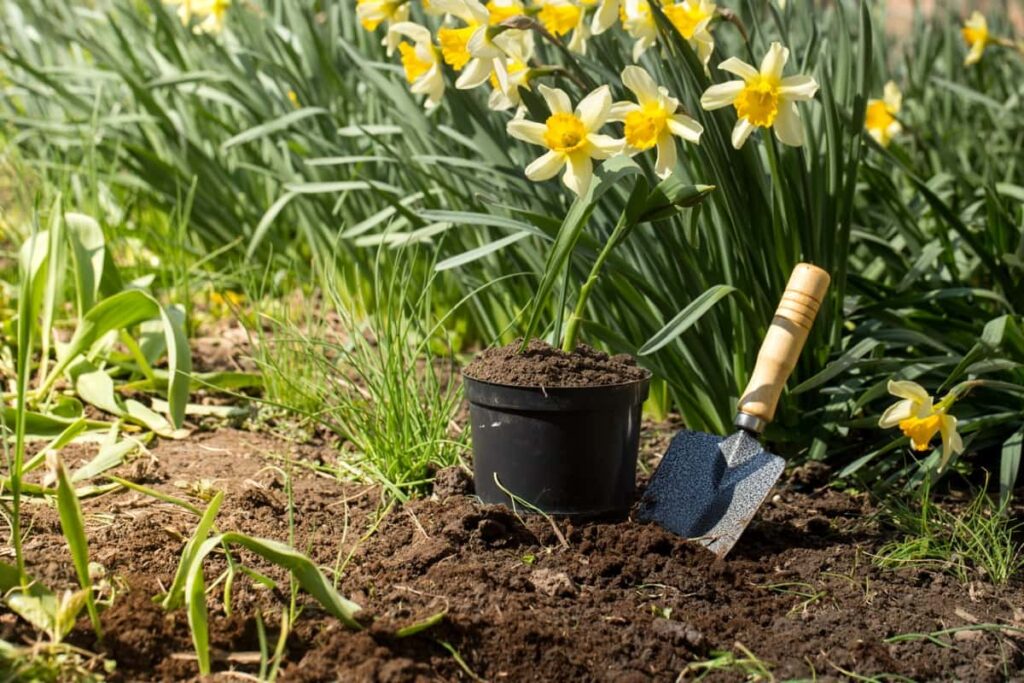
Conclusion
Creating a beautiful and productive flower garden is a rewarding experience that brings joy and beauty to your outdoor space. The key to success is to plan, choose the right plants for your climate and soil, and provide them with proper care and maintenance.
Whether new to gardening or a seasoned pro, following the steps outlined in this guide will help you create a flower garden that you can enjoy for years to come. With a bit of patience, hard work, and attention to detail, you’ll be able to create a beautiful garden that provides a bounty of fresh flowers for you to enjoy.
- Management Pests and Diseases in Your Cotton Field
- Sheep Farming Business Plan for Beginners
- Aquaponic Farming at Home: A Step-By-Step Guide
- Profitable Village Farming Business Ideas in 2024
- High-Yield Aquaculture: Fast-Growing Fish for Farming
- Effective Fish Pond Construction Techniques for Beginners
- Irrigation and Water Management in Pineapple Farming
- Blossom to Harvest: Mastering Flowering and Pollination in Papaya Farming
- Pig Fattening Essentials: From Selection to Sale for Beginners
- Raising Wagyu Cattle: A Complete Guide for Premium Beef Production
- Soil Types and Their Water Holding Capacity
- Optimizing Irrigation Schedules for Coconut Groves for Enhanced Yield
- Espresso Your Garden: Coffee Grounds for Healthier Acid-Loving Plants
- The Best Soil Mix for Snake Plants: How to Mix Your Own Snake Plant Soil
- Green Thumb Success: Expert Tips for Cultivating Greenhouse Beans All Year Round
- Bloom All Year Round: The Ultimate Guide to Indoor Hyacinth Care
- Eco-Friendly Gardening: How to Make Liquid Fertilizer from Kitchen Waste
- Ultimate Guide to Grow Anise in Pots: Explore Seed Propagation to Harvesting
- Guide to Raising Chester White Pigs: Discover Breed Facts to Growth Management
- Mastering the Elegance: The Ultimate Guide to Weeping Cherry Tree Care, Planting, and Maintenance
- Ultimate Guide to Planting Garlic in Grow Bags: Growing Strategies for Beginners
- How to Fix Spider Plant Leaf-Related Problems: Natural and Organic Remedies
- 10 Reasons Why Your Tulsi Plant is Shedding Leaves: Home Remedies and Solutions
- Optimizing Growth and Yield: The Advantages of Palm Bunch Ash Fertilizer
- Utilizing Neem Oil Extract as a Natural Pesticide for Hydrangea
- From Soil to Harvest: Various Ways in Which Farmers Can Use AI Tools
- Steps to Encourage and Induce Citrus Flowers: A Comprehensive Guide
- How to Fix Snake Plant Leaf-Related Issues: Natural and Organic Remedies
- Transform Your Garden into a Fragrant Oasis with Raat Ki Rani (Night Blooming Jasmine)
- Discover the Ideal Chicken Breeds for Philippine Farms
- How to Create a Poultry Egg Farm Business Plan for Profits
- Grow Lemon Cucumbers Like a Pro: Insider Techniques for Bountiful Yields
- Ultimate Guide to Caring for Your Pink Princess Philodendron: Tips for Thriving Variegation
- Areca Nut Profit Per Acre: Calculating Yield and Cost of Cultivation
- How Kaveri Chicken is Becoming a More Profitable Breed in Indian Backyards
- Transform Your Barn: 9 Steps to Convert a Horse Stall into a Chicken Coop
